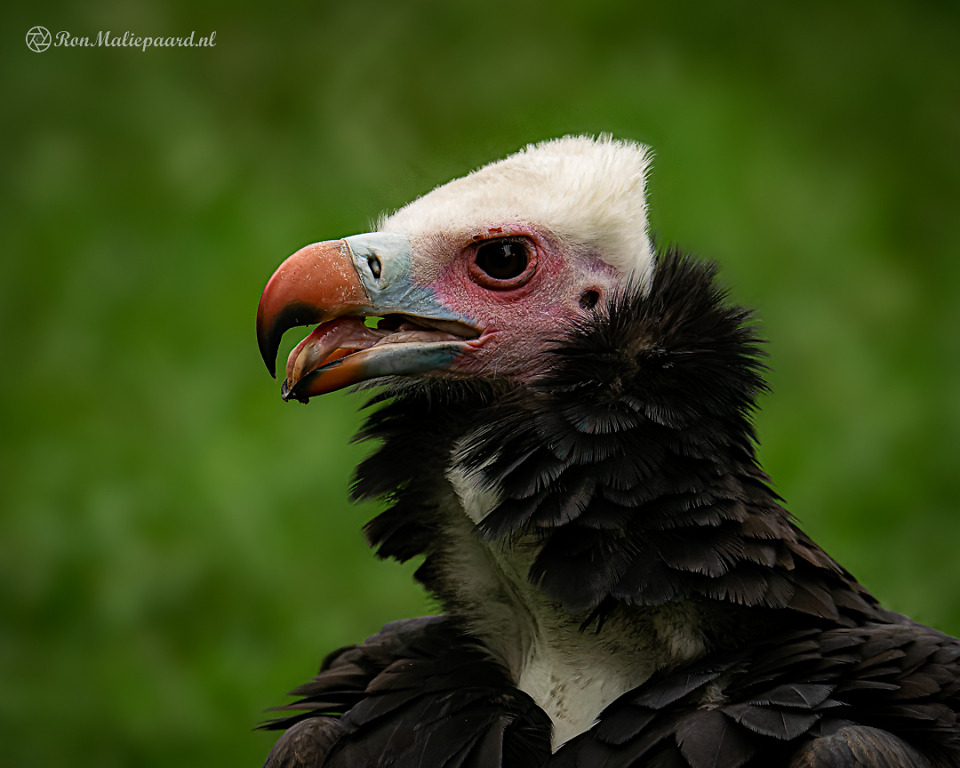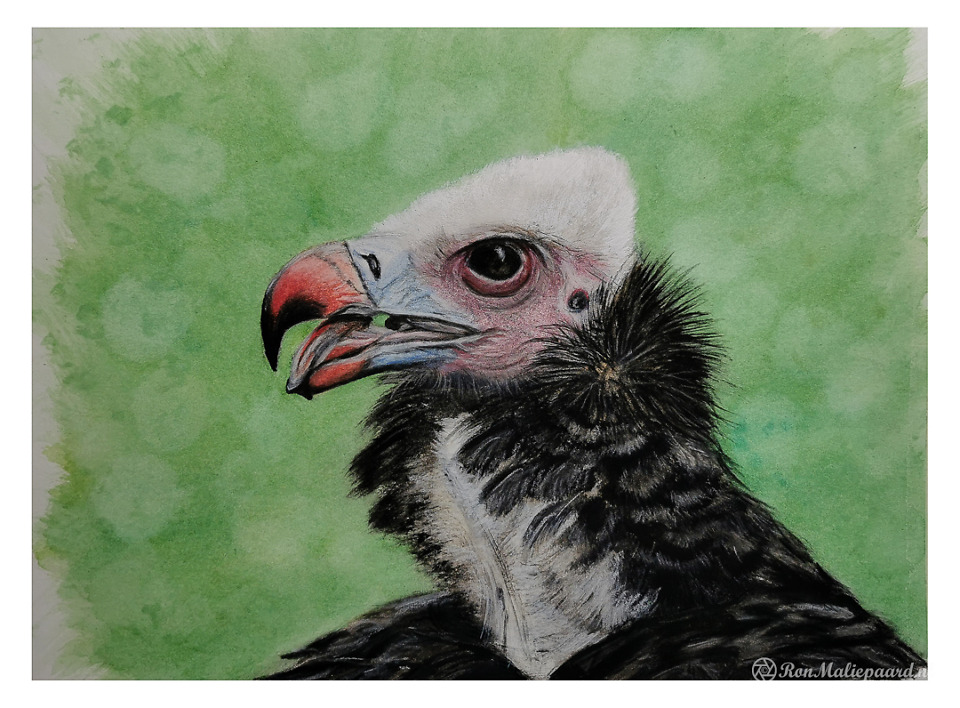
This beautiful head belongs to the White-headed Vulture (Trigonoceps occipitalis).
Its head has a distinctive reddish beak with a bluish waxy skin behind its beak. On its head a beautiful white crest, that’s where it owes its name. Around and under his eyes there is a pink red bare skin. When excited it turns red!
This vulture species is found in the Savannah of South Africa. Often solitary, but can also occur in small groups.
It can have a wingspan of more than two meters and weigh about six kilograms. It has big strong claws, most other vultures don’t. He is therefore not only a scavenger, but is also a good hunter himself. Young antelopes and goats are not safe from him. Other vultures ‘are willing’ to step aside when the white-headed vulture is present at a carcass.
Unfortunately, they are under serious threat (man-made, of course), due to poaching and loss of habitat. Poisoned carcasses are also deposited (to kill other predators). If a white-headed vulture eats this, it will also become sick and even dy. There are now only about 10,000 to 20,000 white-headed vultures left in all of Africa. Fortunately, zoos such as Diergaarde Blijdorp and Avifauna are trying to ensure that white-headed vultures grow again through a breeding program. Young are regularly born to be released later on, in the hope that the white-headed vulture will not become extinct.
I thought his head was so beautiful that I thought it was worth a painting! I posted it below (and on my Instagram account @ronmaliepaardnl_art).

–..– Facebook –..– Instagram –..– Adobe Portfolio –..– Photo albums –..– Nature blog –..–
